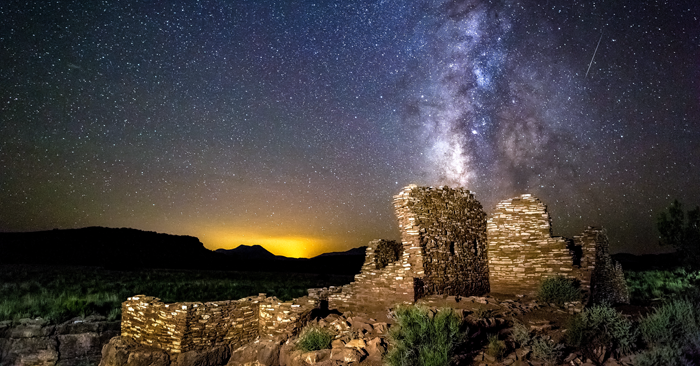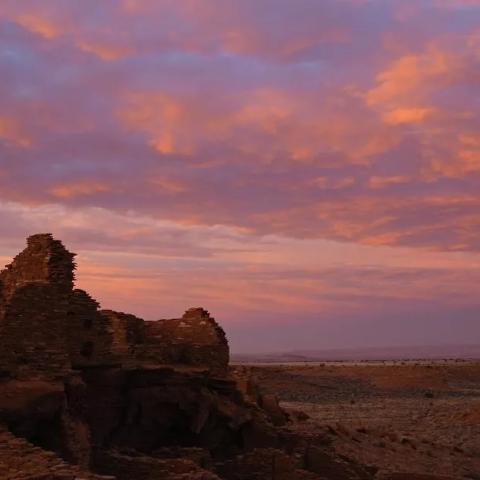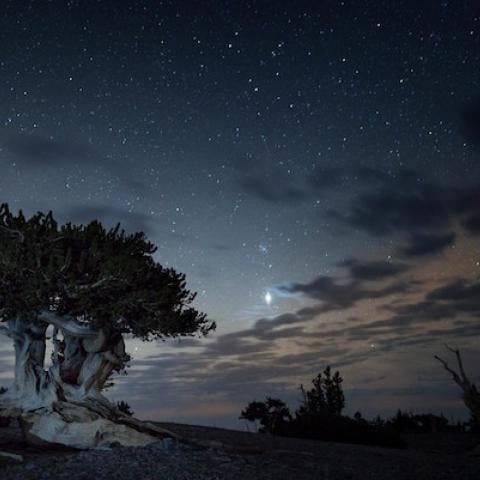
The Milky Way sets over Lomaki Puelbo at Wupatki National Monument, with the glow of Flagstaff in the distance. Photo by Flickr user CEBImagery, licensed under CC BY-NC 2.0.
Great Basin National Park in Nevada and the Flagstaff Area National Monuments -- Sunset Crater Volcano, Walnut Canyon and Wupatki -- have received certification as International Dark Sky Parks from the International Dark-Sky Association.
The units received their certification last week.
According to a press release concerning the national monuments, they "and their immediate environs produce little light pollution of their own, with minimal amounts from Walnut Canyon and Sunset Crater Volcano and almost no light pollution at Wupatki."
The monuments are near Flagstaff, Arizona, a city with a population of more than 65,000 people. In 2001, Flagstaff became the first International Dark Sky City and has progressive lighting codes that prevent unnecessary light pollution. Earlier this year, the National Park Service nominated the monuments for dark sky park status to celebrate efforts to protect their dark skies and share them with the public.
“Each of the monuments offers a spectacular night sky that reflects the criteria for designation as a Dark Sky Park,” said Caleb Waters, maintenance mechanic supervisor, who led the effort. “Achieving this designation was a collaborative process. The park staff worked with our regional and national offices to gather and interpret data, make lighting retrofits, and get the message out to visitors.”
Using current research, addressing park lighting, and hosting astronomy events with community partners such as the City of Flagstaff, Flagstaff Dark Skies Coalition and Lowell Observatory, the Flagstaff Area National Monuments achieved the International Dark Sky Park award.
“Working with IDA and local partners, we hoped to get the designation as part of our celebration of the NPS Centennial in 2016,” said Superintendent Kayci Cook Collins. “The timing is perfect.”
At Great Basin, efforts are underway to build a research observatory there.




 Support Essential Coverage of Essential Places
Support Essential Coverage of Essential Places







Add comment